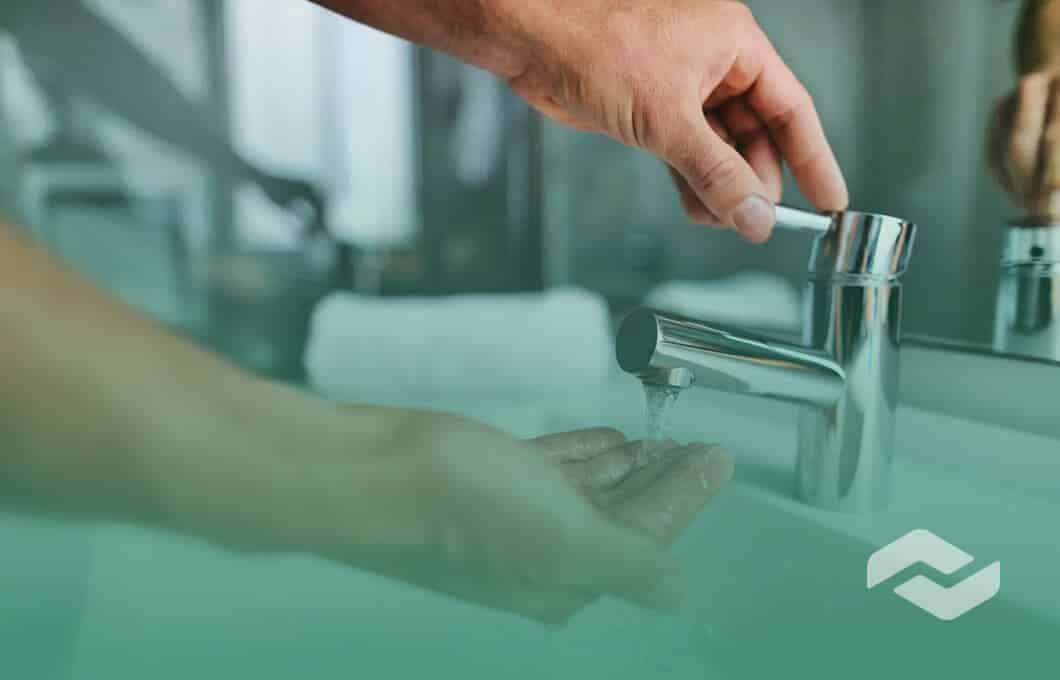Credit Repair Statistics
Credit makes the world go round by fueling consumption. However, the going can get pretty tough for consumers with low credit scores, affecting their ability to take loans, use credit cards, and more. If you have been in such a situation or are interested to know what to do when that happens, these credit repair statistics should prove useful.
Credit repair is a right available to all US citizens to contest the negative items on their credit reports. These stats and facts will ensure that you are armed with the right knowledge to know how to go about it so that you can build and maintain a healthy credit score.
Top Credit Repair Statistics (Editor’s Choice)
- The credit repair industry has experienced a 6.4% YoY decline in revenue since 2016, mainly due to the booming US economy.
- Payment history has the greatest (35%) impact on your FICO score.
- Fewer than 1 in 5 consumers obtain copies of their credit report every year.
- 61% of Americans believe that income has a bearing on their credit score.
- Among consumers who use credit repair services, 26% report improvements in the 100 to 149 points range.
General Credit Repair Facts
1. The US credit repair market size is worth $3.4bn in 2021.
The industry has registered a revenue decline of 5.2% per year on average between 2016 and 2021. The industry is countercyclical, meaning that it generally sees a downturn when the overall economy is booming and consumers are more confident. There has also been a rise in consumers filing for bankruptcy or using free credit-related advice instead of seeking credit repair.
(IBISWorld)
2. There are about 69,000 credit repair businesses in the US as of 2021.
Credit repair industry statistics show that the exact number is 69,090, including both state-focused and national credit repair companies. The figure represents a decline of 5.7% from 2020. The states with the largest number of credit repair companies are California, Florida, and New York. Interestingly, this labor-intensive business is also highly fragmented, with no company having more than a 5% market share.
(IBISWorld)
3. The average FICO credit score in mid-2020 was 711.
More than 10% (11.1%) of the US population has a FICO score under 550, while 1.2% have a perfect score of 850. The average VantageScore for the same period was 688. Credit repair business statistics show that average credit scores increase as we move up the age and income brackets. Average credit scores have further registered a consistent rise over the last few years.
(Lexington Law)
4. The Villages, a Florida community for residents aged 55 and above, is the city with the highest median FICO score in the US.
Its median FICO score is 807. Other cities at the top are Sun City West, Arizona (789), Sun City Center, Florida (789), Green Valley, Arizona (788), and Los Altos, California (784). On the other hand, credit repair statistics show that the lowest median scores are for East St. Louis, Illinois (552), Camden, New Jersey (552), Chester, Philadelphia (552), Detroit, Michigan (560), and Gary, Indiana (561).
(WalletHub)

5. Payment history has the greatest impact on your FICO score, accounting for 35%.
Payment history includes factors like the number of late payments, as well as period and amount of late payments, frequency and recency, number of accounts with late payments, etc. Other factors that contribute to your FICO score are amounts owed accounts (30%), length of credit history (15%), the mix of credit in use (10%), and new credit (10%). One way to improve your score is to study the typical traits of people with high scores regarding these factors.
(Go Clean Credit)
6. Credit reporting agencies receive information on 1.3bn tradelines from 10,000 data furnishers every month.
Credit repair facts show that tradelines are individual information sources on a consumer report, such as an account for a mortgage loan, car loan, or credit card debt. The three credit reporting agencies—Equifax, Experian, and TransUnion—each maintain more than 200 million files on consumers. The information on these files comes from a wide range of data furnishers or creditors. This increases the chance of errors in credit reports.
(CFPB)
7. About 35% of American adults with a credit file have a report of debt in collections.
Credit repair trends show that, on average, the debt in collections amount owed is $5,178. Debt in collections refers to non-mortgage bills (e.g., credit card balance, medical bill, utility bill) outstanding for more than 180 days past the due date. Non-mortgage payments outstanding for 30 to 180 days are said to be past due debt, and 5.3% of adults have these in their reports.
(Urban Institute)
8. Over 50% of collection trade lines appearing on credit reports are related to medical bills.
The majority of outstanding items on credit reports for Americans are debt collectors seeking to settle medical bills. Other categories like outstanding cable or cellular service, utilities, retail, banking, rental or leasing, etc., are present in much smaller numbers. Credit repair industry facts meanwhile show that more than a third of consumers’ disputes are related to collections.
(CFPB)
9. Only about 15% of consumer disputed items are addressed internally by credit reporting agencies.
The rest are passed on to data furnishers, or external agencies providing credit-related information to reporting agencies. The Consumer Financial Protection Bureau (CFPB) meanwhile found that much of the consumer credit repair documentation mailed to reporting agencies to support their disputes may not get passed on to the data furnishers. This can cause delays and confusion in the repair process.
(CFPB)
10. 61% of Americans believe that income has a bearing on the credit score, according to credit repair myths.
Income does matter for loan and credit card applications, but your credit scores reflect your credit history. 79% of consumers believe that credit scores are listed in credit reports, 42% believe that using debit cards or selecting “credit” when using debit cards builds credit history, and 29% believe that closing a credit card helps credit scores. Correct information on these is part of the service provided by the best credit repair companies.
(Credit Card Insider)
11. Collections are the most common items successfully reviewed by credit repair companies, as reported by 55.2% of consumers.
Even within the service category of removing negative items from reports, credit repair industry statistics show that the rate of success varies widely for companies. The other items in order of successful removal are late payments (53.6%), medical bills (43.8%), charge-offs (30.6%), inquiries (25.8%), judgments (20.8%), student loans (17.8%), and bankruptcy-related items (11.2%). Of these, the most significant credit score gains are reported for bankruptcy recovery.
(Credit Knocks)

Consumer Statistics on Credit Repair
12. Fewer than 1 in 5 consumers obtain copies of their credit report every year.
Many US consumers don’t even realize that they are entitled to a free annual copy of their credit report from each reporting agency. Many who know this also ignore going through their reports every year. Reviewing your report is the most effective way to identify any error that may prove expensive later.
(CFPB)
13. 48% of consumers see an increase of 100 points or more in their credit score on using credit repair services for 6 months or more.
Are credit repair services effective? Credit repair statistics show they often are. Of course, resolution of credit report disputes takes time, and often, better results come when consumers stay with their agency longer. According to the same report, 100+ point gains fall to 33% for consumers who used the services for 1 to 2 months.
(Credit Knocks)
14. The most common score improvements reported by credit repair consumers are between 100 and 149 points.
Credit repair statistics show that, among consumers who use these services, 26% report improvements in the 100 to 149 points range. 17.2% report improvements of between 75 and 99 points, while only 8.4% report gains of 0-24 points. At the upper end of the spectrum, 15.4% of consumers report gains of more than 150 points.
(Credit Knocks)

15. Only 1 in 250 consumers usually have a score change of more than 100 points.
Despite the figures in the previous point, consumers need to be realistic regarding changes in their credit scores. FTC figures show that across all consumers, the chances of significant improvements are pretty low. According to credit repair business statistics, even a change of 25 or more points is seen by just 1 in 20 consumers.
(FTC)
16. 32% of consumers spend over $750 on credit repair services.
A close 31% report a lifetime credit repair cost of between $250 and $500, including monthly fees, one-time fees, and additional expenses. 17% report a lifetime total of under $250. Among the $750+ spenders, 48% report credit score gains of 100 points or more. This, however, should not be interpreted to mean that a higher average cost of credit repair will yield more substantial gains, but studies show that credit score improvements involve both time and money.
(Credit Knocks)
17. 44.6% of consumers start receiving credit repair services with a 300 to 579 credit score.
Based on credit repair facts, 33.4% start with a 580 to 669 score. The percentages for consumers with scores closer to the perfect figure of 850 are much smaller. The results are also much more dramatic for consumers with lower scores—49.3% of those starting in the 300 to 579 range report a 100+ point increase. In fact, the highest percentage of people (53.5%) with 100+ gains are those receiving bankruptcy recovery services.
(Credit Knocks)
18. 36% of complaints about credit repair services filed with the CFPB are related to fraud or scams.
The credit repair industry has had to deal with a lot of consumer mistrust because of several fly-by-night operators and the difficulty in differentiating between reliable and unreliable service providers. Credit repair facts show that other complaints filed with the CFPB include problems with customer service (19%), misleading or confusing advertising (17%), unexpected fees (13%), confusing or missing disclosures (10%), and excessive credit repair cost (6%).
(Statista)

19. 67% of consumers report their experience with credit repair services as “Good” or “Excellent.”
Due to federal and state laws to weed out unscrupulous service providers, the credit repair industry is seeing some improvement in reputation. Among clients who spent at least 3 months with the same company, the above figure rose to 71%. An even higher proportion at 87% report their credit repair company’s business practices as “Professional” or “Fair.” According to credit repair trends, 6.6% of consumers report having a “Bad” experience, while 12% report “Shady” or “Borderline Illegal” practices, which are still remarkably high.
(Credit Knocks)
20. 45.4% of consumers report finding their credit repair company through an online search.
This shows that credit repair marketing through online channels is essential for companies. This includes providing consistently top-quality services to avoid negative reviews. 37.2% report basing their choice on referrals. Only 13.4% rely on advertisements, while 2.8% decide based on phone solicitation.
(Credit Knocks)
21. 55.5% of online search clients spend over $500 compared to 48.9% coming through referrals.
While customers hiring credit repair services through search tend to spend the most, those coming through ads or phone solicitation spend the least. Statistics on credit repair show that a higher average cost of credit repair is usually related to staying longer with the company; this is probably why online search and referral clients report better credit gains and fewer billing issues. Clients coming through credit repair advertising or phone solicitation are more likely to report having a poor experience with the hired company.
(Credit Knocks)
22. 56.2% of credit repair consumers report removal of negative items as the top service received from their hired company.
One of the common credit repair myths is that credit repair companies provide only one type of service. Apart from helping remove items like late payments, collections, and charge-offs, the other major services reported are credit consulting (49%), setting up payments with creditors (48%), debt consolidation (46.6%), sending dispute letters to credit bureaus (39.8%), sending goodwill letters (28.6%) and cease and desist letters (24.8%) to creditors, and helping with identity theft recovery (21%).
(Credit Knocks)

23. One in 5 consumers has an error in at least one of their three credit reports.
While different sources claim anything from 25% to 75%, credit repair industry facts in a reputable study by the Federal Trade Commission (FTC) found the figure to be slightly lower at 20%. That is still a remarkably high probability of a wrong entry in your report, which could lead to a lower score and a more expensive loan.
(FTC)
The Bottom Line
Credit repair is an important arm of the financial services industry and can prove particularly critical if you face a lower credit score because of errors in your credit reports. With many consumers, however, still lacking the knowledge to make full use of this facility, we hope that these credit repair statistics will help bridge the gap, making it likelier for readers to lead more financially secure lives.
References: IBISWorld, IBISWorld, Lexington Law, WalletHub, Go Clean Credit, CFPB, Urban Institute, CFPB, FTC, CFPB, CFPB, Credit Card Insider, Credit Knocks, Credit Knocks, FTC, Credit Knocks, Credit Knocks, Statista, Credit Knocks, Credit Knocks, Credit Knocks, Credit Knocks, Credit Knocks




Leave a Reply